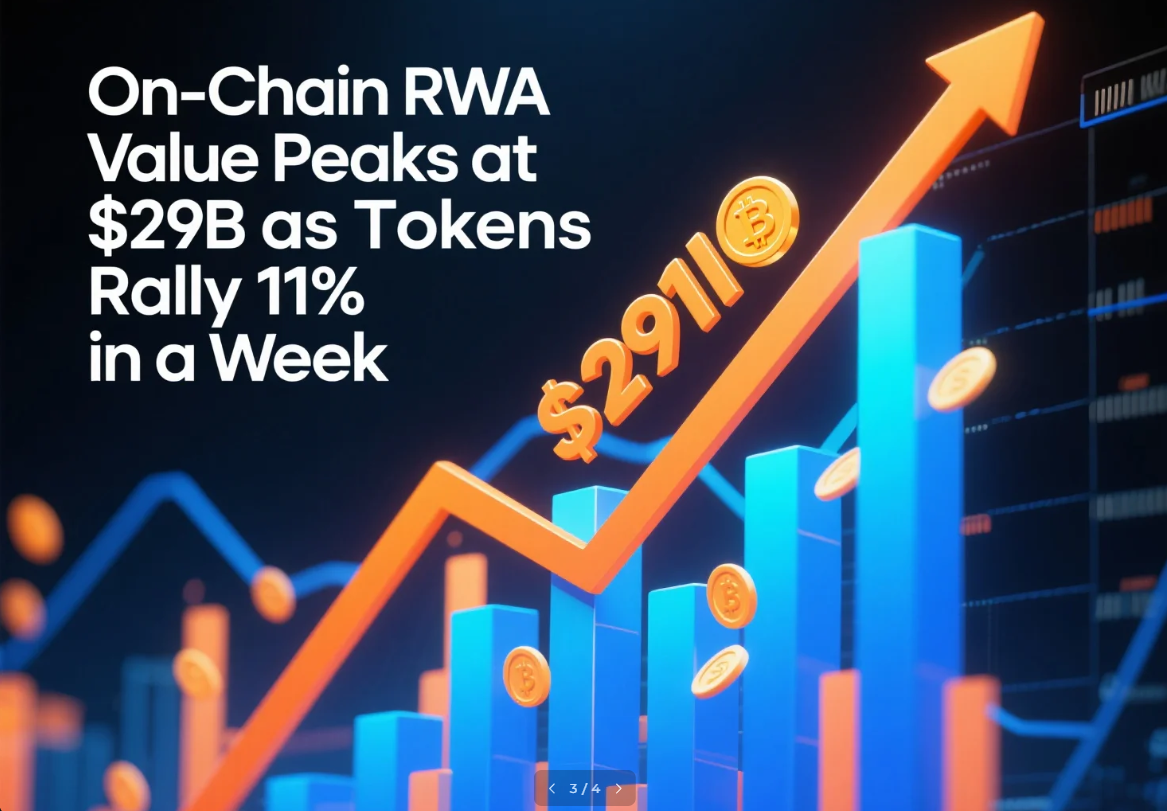Michigan Consumer Sentiment Jumps to 60.7 as SP500 Nears Record Highs – Market Optimism Grows
Don’t just sign up — trade smarter and save 20% with referral codes: Binance WZ9KD49N / OKX 26021839
What is the University of Michigan Consumer Sentiment Index?
What is the University of Michigan Consumer Sentiment Index?
The University of Michigan Consumer Sentiment Index, often referred to simply as the Consumer Sentiment Index (CSI), is a key economic indicator that measures consumer confidence in the United States. Developed by the University of Michigan’s Survey Research Center, this index provides valuable insights into the overall health of the economy by gauging how consumers feel about their personal financial situations, the current state of the economy, and their expectations for the future.
Consumer sentiment is a crucial factor in driving economic activity, as consumer spending accounts for a significant portion of the U.S. gross domestic product (GDP). When consumers are confident, they tend to spend more on goods and services, which can stimulate economic growth. Conversely, when consumer confidence is low, spending may decline, leading to slower economic expansion or even recession.
The index is based on a monthly survey conducted among a representative sample of U.S. households. The survey asks participants a series of questions related to their current financial situation, their expectations for the next six months, and their views on the overall economic outlook. These responses are then aggregated and weighted to produce a composite score that reflects the general mood of consumers.
The Consumer Sentiment Index is released at the end of each month, typically around the 15th, and is closely watched by economists, investors, and policymakers. It serves as an early warning signal for potential shifts in economic conditions, helping to inform decisions related to monetary policy, investment strategies, and business planning.
While the index is primarily focused on the U.S. economy, its implications can have global repercussions, especially in today’s interconnected financial markets. A drop in consumer confidence in the U.S. can lead to increased volatility in stock and bond markets, as well as affect trade and investment flows worldwide.
It’s important to note that while the Consumer Sentiment Index is a powerful tool, it should not be viewed in isolation. Economic conditions are influenced by a wide range of factors, including employment rates, inflation, interest rates, and geopolitical events. Therefore, the index is most effective when used in conjunction with other economic indicators to provide a more comprehensive view of the economic landscape.
How does consumer sentiment affect the stock market?
How Does Consumer Sentiment Affect the Stock Market?
Consumer sentiment plays a crucial role in shaping the stock market. As the largest component of economic activity, consumer spending drives demand for goods and services, which in turn influences corporate earnings and investor confidence. When consumers are optimistic about the economy, they tend to spend more, leading to increased revenue for businesses and potentially higher stock prices. Conversely, when consumer sentiment is weak or pessimistic, spending declines, which can lead to lower corporate profits and a bearish trend in the stock market.
The Link Between Consumer Confidence and Economic Health
Consumer confidence is often measured through surveys such as the University of Michigan’s Consumer Sentiment Index or the Conference Board’s Consumer Confidence Index. These indices provide valuable insights into how consumers feel about the current economic environment and their expectations for the future. High levels of consumer confidence typically signal a strong economy, while low levels may indicate an impending recession or economic slowdown.
Investors closely monitor these indicators because they serve as early warning signals for market movements. For example, if consumer confidence begins to decline, it may prompt investors to sell off stocks in sectors that are heavily dependent on consumer spending, such as retail, automotive, and entertainment. This can lead to broader market corrections or even crashes if the decline is significant and sustained.
Impact on Different Sectors
The effect of consumer sentiment varies across different sectors of the stock market. In the retail sector, for instance, a drop in consumer confidence can lead to reduced foot traffic and lower sales, negatively impacting company revenues and stock valuations. Similarly, the housing and construction industries are highly sensitive to consumer sentiment, as home purchases are often driven by economic optimism and financial security.
On the other hand, defensive sectors such as utilities, healthcare, and consumer staples tend to be less affected by fluctuations in consumer sentiment. These sectors provide essential goods and services, making them more resilient during economic downturns. As a result, their stocks often perform better when consumer confidence is low, serving as a hedge against market volatility.
Investor Behavior and Market Psychology
Consumer sentiment also influences investor behavior and market psychology. When consumers are confident, they are more likely to invest in the stock market, either directly or through retirement accounts and mutual funds. This increased demand can drive up stock prices and create a positive feedback loop where rising prices further boost consumer confidence.
Conversely, when consumer sentiment is negative, investors may become risk-averse, leading to a sell-off in equities and a shift toward safer assets like government bonds or gold. This can cause a downward spiral in stock prices, especially in sectors that rely heavily on discretionary spending.
Case Studies: Historical Examples
Historical events have demonstrated the powerful impact of consumer sentiment on the stock market. During the 2008 financial crisis, declining consumer confidence led to a sharp reduction in spending, which contributed to the collapse of major financial institutions and a prolonged market downturn. Similarly, during the early stages of the COVID-19 pandemic, widespread uncertainty and fear caused a massive sell-off in global stock markets, with consumer sentiment playing a central role in the panic.
In contrast, the post-pandemic recovery saw a surge in consumer confidence as vaccination efforts progressed and economies reopened. This optimism translated into strong stock market performance, particularly in sectors like travel, hospitality, and technology, which benefited from increased consumer activity.
Conclusion
Consumer sentiment is a key driver of market dynamics, influencing both corporate performance and investor behavior. Understanding how consumer confidence affects the stock market can help investors make more informed decisions and navigate economic cycles more effectively. By monitoring consumer sentiment indicators and analyzing their implications, investors can better anticipate market trends and adjust their portfolios accordingly.
What is the S&P 500 and why is it important?
What is the S&P 500 and Why is it Important?
The S&P 500, short for the Standard & Poor’s 500, is one of the most widely followed stock market indices in the world. It serves as a benchmark for the performance of large-cap U.S. equities and is often used to gauge the overall health of the U.S. stock market. The index includes 500 of the largest publicly traded companies in the United States, representing a broad range of industries and sectors, including technology, healthcare, finance, consumer goods, and more.
Unlike the Dow Jones Industrial Average, which tracks only 30 large companies, the S&P 500 offers a more comprehensive view of the broader market. It is market-capitalization weighted, meaning that companies with larger market values have a greater influence on the index’s performance. This weighting system makes the S&P 500 a more accurate reflection of the overall market than some other indices.
The S&P 500 was created in 1957 by Standard & Poor’s, a financial services company known for its credit ratings and economic research. Since its inception, it has become a key indicator for investors, fund managers, and economists. Many mutual funds and exchange-traded funds (ETFs) are designed to track the S&P 500, making it an essential tool for both individual and institutional investors seeking to replicate the performance of the broader market.
One of the reasons the S&P 500 is so important is that it provides a clear picture of the U.S. economy’s health. A rising S&P 500 often signals strong corporate earnings, positive investor sentiment, and economic growth. Conversely, a declining index may indicate economic uncertainty, recession risks, or market volatility. As such, it is closely watched by policymakers, central banks, and global investors.
In addition to its role as a market indicator, the S&P 500 is also significant in the world of cryptocurrency and digital assets. Some investors use the S&P 500 as a benchmark for comparing the performance of crypto investments, while others look to the index for insights into macroeconomic trends that can affect the crypto market. For example, during periods of economic instability, investors may shift capital from traditional markets like the S&P 500 to safer or alternative assets such as Bitcoin or gold.
Overall, the S&P 500 is not just a number—it’s a vital barometer of the U.S. economy and a key reference point for investors across various asset classes, including cryptocurrencies. Understanding its composition, performance, and significance can help individuals make more informed decisions in both traditional and emerging financial markets.
What does it mean when the S&P 500 reaches historic highs?
What Does It Mean When the S&P 500 Reaches Historic Highs?
The S&P 500, one of the most widely followed stock market indices in the world, is a barometer of the U.S. equity market’s health and performance. When it reaches historic highs, it signifies that the index has surpassed all previous records, reflecting strong investor confidence, economic growth, and positive corporate earnings. However, this milestone is not just a number—it carries significant implications for investors, the economy, and even global financial markets.
Understanding the S&P 500
The S&P 500 is a market-capitalization-weighted index that includes 500 of the largest publicly traded companies in the United States. It is designed to represent the overall performance of the U.S. stock market and is often used as a benchmark for investment performance. Unlike the Dow Jones Industrial Average, which only includes 30 large companies, the S&P 500 offers a more comprehensive view of the market.
What Are Historic Highs?
A historic high occurs when the S&P 500 closes at a level higher than any previous closing price in its history. These milestones are typically celebrated by analysts and investors as signs of a strong economy and resilient markets. For example, if the S&P 500 closes at 5,000, and that is the highest it has ever been, then it has reached a new historic high.
Implications of Historic Highs
When the S&P 500 hits historic highs, several key factors come into play:
Economic Confidence: A rising S&P 500 often reflects optimism about the economy, with investors expecting continued growth, low unemployment, and stable inflation. Corporate Earnings: Strong performance by the companies in the index—especially those in technology, healthcare, and consumer sectors—can drive the index upward. Investor Sentiment: Historic highs can boost investor sentiment, encouraging more people to invest in the stock market, either through individual stocks or mutual funds and ETFs. Market Valuation: As the index rises, some investors may worry about overvaluation, especially if earnings growth does not keep pace with stock prices.
Historical Context
Historic highs are not uncommon in the stock market, but they do reflect long-term trends. For instance, the S&P 500 hit a record high in January 2021, following a sharp recovery from the pandemic-induced crash of early 2020. This was fueled by massive government stimulus, low interest rates, and strong corporate earnings, particularly in tech-driven sectors.
Investor Considerations
While reaching historic highs can be a sign of a strong market, investors should remain cautious. Market corrections and volatility are natural parts of investing, and even the strongest indices can experience downturns. It’s important to maintain a diversified portfolio and avoid making emotional decisions based on short-term market movements.
Conclusion
The S&P 500 reaching historic highs is a powerful indicator of market strength and economic resilience. It reflects investor confidence, robust corporate performance, and favorable macroeconomic conditions. However, it also serves as a reminder that no market trend lasts forever. Understanding the context and implications of these milestones can help investors make informed decisions and navigate the complexities of the financial markets with greater clarity.
How is consumer confidence measured and reported?
How is Consumer Confidence Measured and Reported?
Consumer confidence is a key economic indicator that reflects the overall sentiment of consumers regarding their financial situation, employment prospects, and the general economy. It plays a crucial role in shaping consumer behavior, which in turn affects business investment, spending, and overall economic growth. Understanding how consumer confidence is measured and reported is essential for investors, policymakers, and businesses to make informed decisions.
1. Surveys and Questionnaires
The most common method of measuring consumer confidence is through surveys and questionnaires conducted by government agencies or private research organizations. These surveys typically ask consumers about their perceptions of current economic conditions and their expectations for the future. Questions often cover areas such as personal income, job security, inflation, and purchasing power.
2. Major Consumer Confidence Indices
Several well-known indices are used to track consumer confidence globally. One of the most prominent is the Consumer Confidence Index (CCI), published by the Conference Board in the United States. This index is based on a monthly survey of approximately 5,000 households and includes questions about current business conditions, employment opportunities, and expected future income.
Another widely followed measure is the University of Michigan Consumer Sentiment Index. This index is released monthly and provides insights into consumer attitudes toward the economy, including assessments of current and future economic conditions, as well as expectations about inflation and unemployment.
3. Data Collection and Analysis
Surveys are typically conducted using structured questionnaires, either online, over the phone, or in person. The responses are then analyzed to calculate a composite score that represents the level of consumer confidence. These scores are usually presented as indices, with a value of 100 serving as a baseline. A score above 100 indicates optimism, while a score below 100 suggests pessimism.
4. Reporting and Publication
The results of these surveys are regularly published in economic reports, news outlets, and official government publications. In the U.S., the Conference Board and the University of Michigan release their findings on specific dates each month, often influencing market reactions and policy decisions. Similarly, other countries have their own institutions that conduct and report on consumer confidence, such as the European Commission’s Consumer Confidence Indicator in the Eurozone.
5. Impact on Markets and Policy
Consumer confidence data is closely watched by financial markets, as it can signal potential shifts in consumer spending patterns. A rise in confidence may lead to increased retail sales and higher stock prices, while a decline may indicate an impending economic slowdown. Policymakers also use this data to assess the health of the economy and to guide monetary and fiscal policies.
In summary, consumer confidence is measured through comprehensive surveys and analyzed to produce key economic indicators. These measures are then reported to the public and used by various stakeholders to understand and respond to economic trends. As such, they play a vital role in the broader landscape of economic analysis and decision-making.
What factors influence consumer sentiment in the U.S.?
What Factors Influence Consumer Sentiment in the U.S.?
Consumer sentiment in the United States is a critical economic indicator that reflects the overall confidence and optimism of households regarding their financial situation, the economy, and future spending intentions. It is closely monitored by economists, policymakers, and investors because it has a direct impact on consumer spending, which accounts for about 70% of the U.S. GDP. Understanding the factors that influence consumer sentiment is essential for predicting economic trends and making informed financial decisions.
Economic Conditions
One of the most significant factors influencing consumer sentiment is the overall state of the economy. Key economic indicators such as GDP growth, employment rates, inflation, and interest rates play a crucial role in shaping public perception. For instance, when unemployment is low and wages are rising, consumers tend to feel more secure and are more likely to spend. Conversely, during periods of high inflation or recession, consumer confidence often declines as people become more cautious with their spending.
Inflation and Cost of Living
Inflation, particularly the rising cost of essentials like housing, food, and energy, has a profound effect on consumer sentiment. When prices increase rapidly, households may feel financially strained, leading to reduced discretionary spending. In recent years, inflation has been a major concern for American consumers, especially after the economic disruptions caused by the global pandemic and supply chain issues. As a result, many households have adjusted their spending habits, prioritizing necessities over luxury goods.
Employment and Income Levels
Employment stability and income levels are fundamental to consumer confidence. A strong job market with low unemployment fosters optimism, while job losses or wage stagnation can lead to anxiety and decreased spending. The availability of well-paying jobs also influences how much consumers are willing to spend on big-ticket items such as cars, homes, and education. Additionally, the rise of remote work and gig economy opportunities has introduced new dynamics into the labor market, affecting consumer behavior in complex ways.
Political and Social Environment
The political climate and social environment can significantly impact consumer sentiment. Political instability, policy changes, and geopolitical tensions can create uncertainty, which often leads to a decline in consumer confidence. For example, during times of political polarization or when there are major shifts in government policies—such as tax reforms or trade agreements—consumers may become more cautious. Social trends, including cultural shifts and public health concerns, also play a role in shaping attitudes toward spending and saving.
Consumer Debt and Financial Health
Consumer debt levels, including credit card balances, student loans, and mortgage debt, are important factors in determining financial security and, consequently, consumer sentiment. High levels of debt can make individuals more risk-averse, reducing their willingness to spend. On the other hand, a strong financial position with manageable debt and sufficient savings can boost confidence and encourage more spending. Financial literacy and access to credit also influence how consumers manage their money and make purchasing decisions.
Market Trends and Retail Activity
Market trends and retail activity provide real-time insights into consumer behavior. Retail sales data, stock market performance, and trends in e-commerce can all affect how consumers perceive the economy. A booming stock market, for example, can create a “wealth effect,” where consumers feel wealthier and are more inclined to spend. Similarly, a surge in online shopping or a shift toward experiential spending can reflect changing preferences and economic conditions.
Psychological and Behavioral Factors
Psychological and behavioral factors also play a role in shaping consumer sentiment. Perception of personal financial health, trust in institutions, and general optimism or pessimism about the future can influence spending patterns. Behavioral economics suggests that even small changes in messaging or framing can affect consumer decision-making. For example, positive news about the economy or successful policy interventions can quickly improve consumer confidence, even if underlying economic conditions remain unchanged.
Understanding these factors helps businesses, governments, and individuals better navigate the economic landscape. By monitoring and responding to shifts in consumer sentiment, stakeholders can make more informed decisions that support economic stability and growth.
What is the relationship between consumer spending and economic growth?
What is the Relationship Between Consumer Spending and Economic Growth?
Consumer spending plays a central role in driving economic growth. In any economy, the total output of goods and services—commonly measured by Gross Domestic Product (GDP)—is influenced by several key factors: consumption, investment, government spending, and net exports. Among these, consumer spending often represents the largest component, particularly in developed economies.
In the United States, for example, consumer spending accounts for more than two-thirds of GDP. This makes it a critical indicator of economic health. When consumers feel confident about their financial situation, they are more likely to spend money on goods and services, which in turn stimulates production, increases employment, and boosts business revenues. This cycle of increased demand and supply leads to higher economic growth.
Conversely, when consumer confidence declines due to factors such as rising unemployment, inflation, or economic uncertainty, spending tends to decrease. A drop in consumer spending can lead to reduced business activity, layoffs, and even recession. This highlights the direct link between consumer behavior and overall economic performance.
Economic policies often aim to influence consumer spending to stabilize or stimulate growth. Central banks may lower interest rates to encourage borrowing and spending, while governments might implement fiscal policies such as tax cuts or stimulus payments to boost household incomes and, consequently, consumer demand.
However, it’s important to note that while consumer spending is a major driver of economic growth, it is not the only factor. Investment in infrastructure, innovation, and education, along with strong export sectors, also contribute significantly to long-term economic development. Nonetheless, understanding the dynamics of consumer spending remains essential for policymakers, businesses, and investors seeking to navigate the complexities of the modern economy.
How do investors react to rising consumer sentiment?
How Do Investors React to Rising Consumer Sentiment?
Rising consumer sentiment is a key economic indicator that reflects the overall confidence of consumers in the economy. When consumers feel optimistic about their financial situation, job security, and future prospects, they tend to increase their spending. This increased spending can have a ripple effect throughout the economy, influencing business revenues, employment rates, and even stock market performance.
Investors closely monitor consumer sentiment because it provides valuable insights into the health of the economy and potential shifts in market dynamics. A surge in consumer confidence often signals a strong or improving economic environment, which can lead to positive reactions from investors across various asset classes.
The Impact on Stock Markets
One of the most direct effects of rising consumer sentiment is its influence on stock markets. When consumers are more confident, they are more likely to spend money on goods and services, which can boost corporate earnings. As a result, stocks in sectors such as retail, consumer discretionary, and technology may see increased demand from investors.
Moreover, investor sentiment itself can be affected by rising consumer confidence. If investors perceive the economy as being on a stronger footing, they may become more willing to take on risk, leading to a rise in equity prices. This can create a positive feedback loop where stronger stock markets further reinforce consumer confidence.
Effects on Bond Markets
In contrast to equities, rising consumer sentiment can have a mixed impact on bond markets. When the economy is strong and consumer confidence is high, investors may anticipate higher inflation or interest rates. This can lead to a sell-off in bonds, particularly long-term government securities, as investors seek higher returns elsewhere.
Central banks may also respond to rising consumer sentiment by tightening monetary policy to prevent the economy from overheating. Such actions can lead to higher interest rates, which typically cause bond prices to fall. Therefore, while rising consumer sentiment is generally positive for equities, it can pose challenges for fixed-income investors.
Implications for Cryptocurrencies
Cryptocurrencies, being a relatively new and volatile asset class, are influenced by both macroeconomic trends and investor psychology. Rising consumer sentiment can indirectly affect the crypto market by contributing to a broader shift toward risk-on assets. In such an environment, investors may be more inclined to allocate capital to cryptocurrencies, viewing them as high-growth opportunities.
However, the relationship between consumer sentiment and cryptocurrency prices is not always straightforward. While optimism in traditional markets can drive up crypto prices, factors such as regulatory changes, technological developments, and global economic uncertainty can also play significant roles. Therefore, investors must consider a range of variables when assessing how rising consumer sentiment might impact their crypto portfolios.
Conclusion
Rising consumer sentiment is a powerful signal that can influence investor behavior across multiple asset classes. From driving stock market gains to affecting bond yields and even shaping the trajectory of cryptocurrencies, the implications are far-reaching. For investors, understanding these dynamics is essential for making informed decisions in an ever-evolving financial landscape.
What are the implications of a strong S&P 500 for individual investors?
What Are the Implications of a Strong S&P 500 for Individual Investors?
The S&P 500 is one of the most widely followed stock market indices, representing the performance of 500 large-cap U.S. companies. When the S&P 500 performs strongly, it often signals a robust economy, investor confidence, and positive corporate earnings. For individual investors, a strong S&P 500 can have both direct and indirect implications that affect investment strategies, portfolio performance, and overall financial planning.
1. Increased Portfolio Value
For investors who hold stocks or index funds that track the S&P 500, a strong performance in the index directly translates to higher portfolio values. This can lead to capital gains, which may be taxable depending on the type of account (e.g., brokerage accounts vs. retirement accounts). A rising S&P 500 also provides a sense of security and confidence, especially for long-term investors who rely on market growth to meet their financial goals.
2. Influence on Investment Decisions
A strong S&P 500 can influence how individual investors make decisions. Some may feel more confident in taking on additional risk, such as investing in more volatile assets like small-cap stocks, emerging markets, or even cryptocurrencies. Others may choose to rebalance their portfolios to maintain a desired asset allocation, ensuring they don’t become overly concentrated in equities.
3. Impact on Retirement Planning
Retirement savings, particularly those held in 401(k)s or IRAs, are often heavily weighted toward equities, including S&P 500 index funds. A strong S&P 500 can accelerate the growth of these accounts, helping individuals reach their retirement goals faster. However, it’s important to note that market performance is not guaranteed, and overreliance on a single index can expose investors to sector-specific risks if the index becomes too concentrated in certain industries.
4. Psychological Effects on Investors
Market performance can significantly impact investor psychology. A strong S&P 500 may encourage more people to invest, particularly those who were previously hesitant due to economic uncertainty or market downturns. On the flip side, prolonged bull markets can sometimes lead to complacency or overconfidence, increasing the risk of poor decision-making during market corrections.
5. Correlation with Other Asset Classes
A strong S&P 500 doesn’t exist in isolation. It often has ripple effects across other asset classes. For example, when equities perform well, bond yields may rise, affecting fixed-income investments. Additionally, a strong stock market can lead to increased demand for alternative assets like real estate or commodities, potentially altering the dynamics of an investor’s diversified portfolio.
6. Risk of Overvaluation
While a strong S&P 500 is generally a positive sign, it can also signal that the market is overvalued. If the index rises too quickly without corresponding increases in earnings or economic fundamentals, it may be vulnerable to a correction. Individual investors should remain cautious and avoid chasing high-performing stocks or sectors without proper research and risk management.
7. Impact on Passive vs. Active Investing
Investors who follow a passive strategy—such as investing in low-cost index funds—are likely to benefit directly from a strong S&P 500. In contrast, active investors may need to reassess their strategies, as outperforming the index becomes more challenging in a strong market. This can lead to increased pressure on fund managers to deliver superior returns, which may involve greater risk-taking or higher fees.
Conclusion
A strong S&P 500 offers numerous benefits for individual investors, including increased portfolio value, improved retirement outlooks, and enhanced confidence. However, it also comes with potential risks, such as overvaluation, psychological biases, and the need for careful portfolio management. Understanding these implications can help investors make informed decisions and navigate the complexities of the financial markets more effectively.
How can individuals track economic indicators like the Michigan Consumer Sentiment Index?
How Can Individuals Track Economic Indicators Like the Michigan Consumer Sentiment Index?
The Michigan Consumer Sentiment Index (MCSI) is a key economic indicator that reflects the confidence of American consumers regarding the current and future economic conditions. This index can influence financial markets, including cryptocurrency, as consumer behavior affects overall economic health and monetary policy decisions. For individuals looking to stay informed about such indicators, there are several reliable methods and platforms available to track the MCSI effectively.
1. Official Sources and Government Websites
The most accurate and up-to-date information on the Michigan Consumer Sentiment Index comes from its official source: the University of Michigan’s Survey Research Center. The center conducts monthly surveys and publishes the results on their website. Investors and analysts can access detailed reports, historical data, and methodological explanations directly from this source.
Website: https://www.sca.isr.umich.edu/
2. Financial News Outlets and Economic Calendars
Financial news platforms such as Bloomberg, Reuters, and CNBC frequently cover major economic indicators, including the MCSI. These outlets provide summaries, expert analysis, and real-time updates that help individuals understand the implications of the index on the broader economy and financial markets.
In addition, economic calendars provided by platforms like Trading Economics or Investing.com list upcoming releases of key indicators, including the MCSI. These calendars allow users to plan ahead and monitor market reactions in real time.
Examples: Trading Economics Investing.com
3. Financial Data Platforms and APIs
For more advanced users or those interested in integrating economic data into their own tools or applications, financial data platforms offer APIs that provide access to the MCSI and other economic indicators. Services like Alpha Vantage, FRED (Federal Reserve Economic Data), and Yahoo Finance provide structured data that can be used for analysis and forecasting.
Examples: FRED (Federal Reserve Economic Data) Alpha Vantage
4. Social Media and Financial Communities
Social media platforms like Twitter and Reddit have become important sources of real-time economic insights. Many economists, analysts, and investors share commentary on the MCSI and its impact on markets. Following relevant accounts or joining finance-focused communities can provide valuable context and early signals.
Platforms: Twitter Reddit – r/Investing
5. Use of Economic Indicator Tracking Tools
There are specialized tools and dashboards designed to track multiple economic indicators simultaneously. These tools often include visualizations, trend analysis, and alerts for significant changes. Some platforms also integrate with trading platforms, allowing users to make data-driven decisions based on the latest economic reports.
Conclusion
Tracking economic indicators like the Michigan Consumer Sentiment Index is essential for individuals who want to stay informed about the broader economic landscape. Whether through official sources, financial news, data platforms, or social media, there are numerous ways to access and interpret this critical data. By understanding how to track these indicators, individuals can make more informed decisions in both traditional and cryptocurrency markets.














